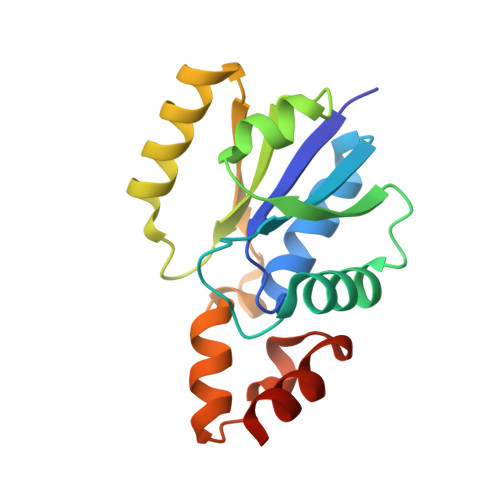Structural Biology and the Design of New Therapeutics: From HIV and Cancer to Mycobacterial Infections: A Paper Dedicated to John Kendrew.
Thomas, S.E., Mendes, V., Kim, S.Y., Malhotra, S., Ochoa-Montano, B., Blaszczyk, M., Blundell, T.L.(2017) J Mol Biol 429: 2677-2693
- PubMed: 28648615
- DOI: https://doi.org/10.1016/j.jmb.2017.06.014
- Primary Citation of Related Structures:
5O06, 5O08, 5O0A, 5O0B, 5O0C, 5O0D, 5O0F, 5O0H - PubMed Abstract:
Interest in applications of protein crystallography to medicine was evident, as the first high-resolution structures emerged in the 50s and 60s. In Cambridge, Max Perutz and John Kendrew sought to understand mutations in sickle cell and other genetic diseases related to hemoglobin, while in Oxford, the group of Dorothy Hodgkin became interested in long-lasting zinc-insulin crystals for treatment of diabetes and later considered insulin redesign, as synthetic insulins became possible. The use of protein crystallography in structure-guided drug discovery emerged as enzyme structures allowed the identification of potential inhibitor-binding sites and optimization of interactions of hits using the structure of the target protein. Early examples of this approach were the use of the structure of renin to design antihypertensives and the structure of HIV protease in design of AIDS antivirals. More recently, use of structure-guided design with fragment-based drug discovery, which reduces the size of screening libraries by decreasing complexity, has improved ligand efficiency in drug design and has been used to progress three oncology drugs through clinical trials to FDA approval. We exemplify current developments in structure-guided target identification and fragment-based lead discovery with efforts to develop new antimicrobials for mycobacterial infections.
Organizational Affiliation:
Department of Biochemistry, University of Cambridge, Tennis Court Road, Cambridge, CB2 1GA UK.















